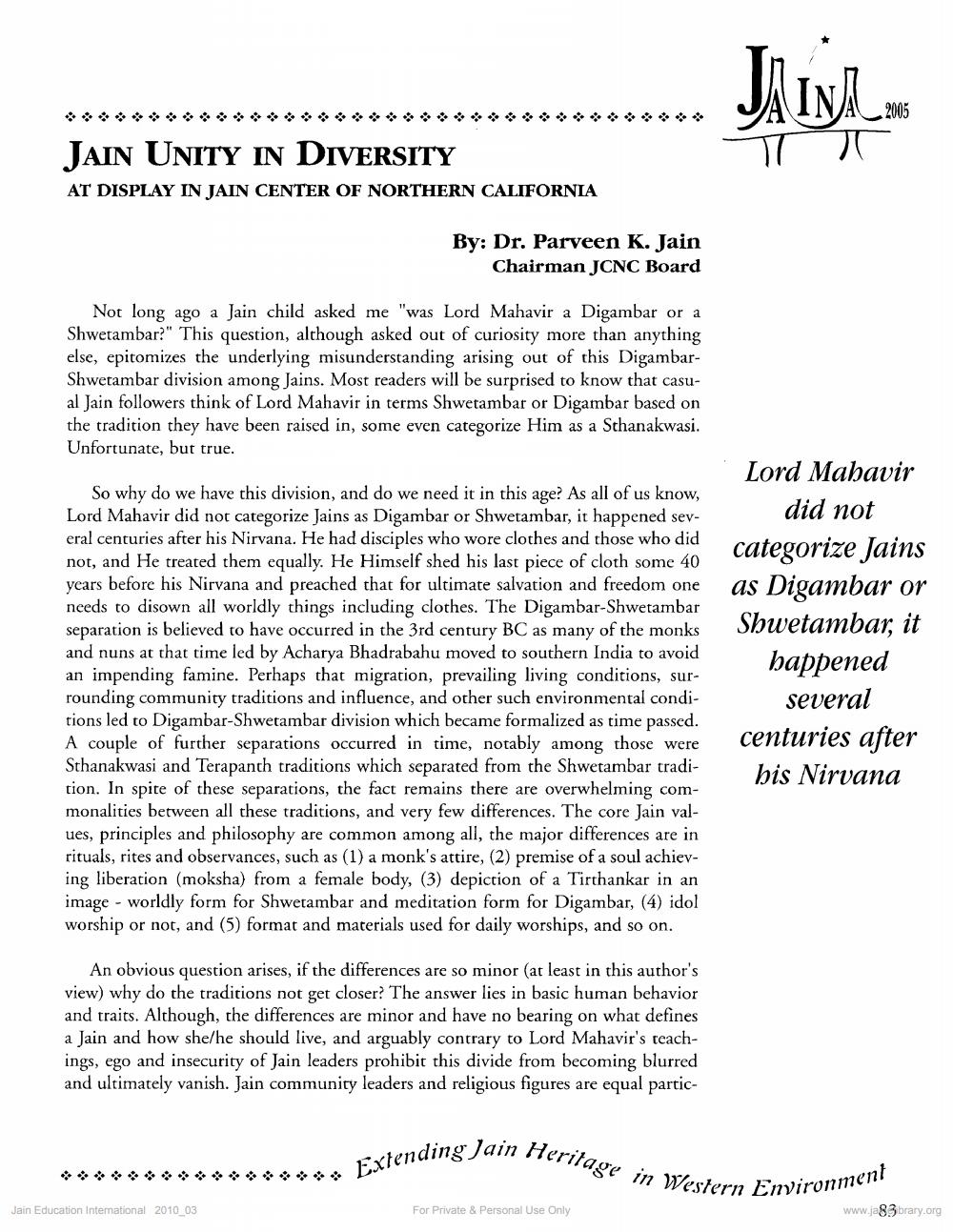________________
JAIN UNITY IN DIVERSITY
AT DISPLAY IN JAIN CENTER OF NORTHERN CALIFORNIA
By: Dr. Parveen K. Jain Chairman JCNC Board
Not long ago a Jain child asked me "was Lord Mahavir a Digambar or a Shwetambar?" This question, although asked out of curiosity more than anything else, epitomizes the underlying misunderstanding arising out of this DigambarShwetambar division among Jains. Most readers will be surprised to know that casual Jain followers think of Lord Mahavir in terms Shwetambar or Digambar based on the tradition they have been raised in, some even categorize Him as a Sthanakwasi. Unfortunate, but true.
So why do we have this division, and do we need it in this age? As all of us know, Lord Mahavir did not categorize Jains as Digambar or Shwetambar, it happened sev eral centuries after his Nirvana. He had disciples who wore clothes and those who did not, and He treated them equally. He Himself shed his last piece of cloth some 40 years before his Nirvana and preached that for ultimate salvation and freedom one needs to disown all worldly things including clothes. The Digambar-Shwetambar separation is believed to have occurred in the 3rd century BC as many of the monks and nuns at that time led by Acharya Bhadrabahu moved to southern India to avoid an impending famine. Perhaps that migration, prevailing living conditions, surrounding community traditions and influence, and other such environmental conditions led to Digambar-Shwetambar division which became formalized as time passed. A couple of further separations occurred in time, notably among those were Sthanakwasi and Terapanth traditions which separated from the Shwetambar tradition. In spite of these separations, the fact remains there are overwhelming commonalities between all these traditions, and very few differences. The core Jain values, principles and philosophy are common among all, the major differences are in rituals, rites and observances, such as (1) a monk's attire, (2) premise of a soul achieving liberation (moksha) from a female body, (3) depiction of a Tirthankar in an image worldly form for Shwetambar and meditation form for Digambar, (4) idol worship or not, and (5) format and materials used for daily worships, and so on.
An obvious question arises, if the differences are so minor (at least in this author's view) why do the traditions not get closer? The answer lies in basic human behavior and traits. Although, the differences are minor and have no bearing on what defines a Jain and how she/he should live, and arguably contrary to Lord Mahavir's teachings, ego and insecurity of Jain leaders prohibit this divide from becoming blurred and ultimately vanish. Jain community leaders and religious figures are equal partic
Jain Education International 2010_03
JA IMA...
2105
ᅲᅲ
For Private & Personal Use Only
Lord Mahavir did not categorize Jains as Digambar or Shwetambar, it
bappened several centuries after
bis Nirvana
Extending Jain Heritage in Western Environment
www.ja83brary.org




